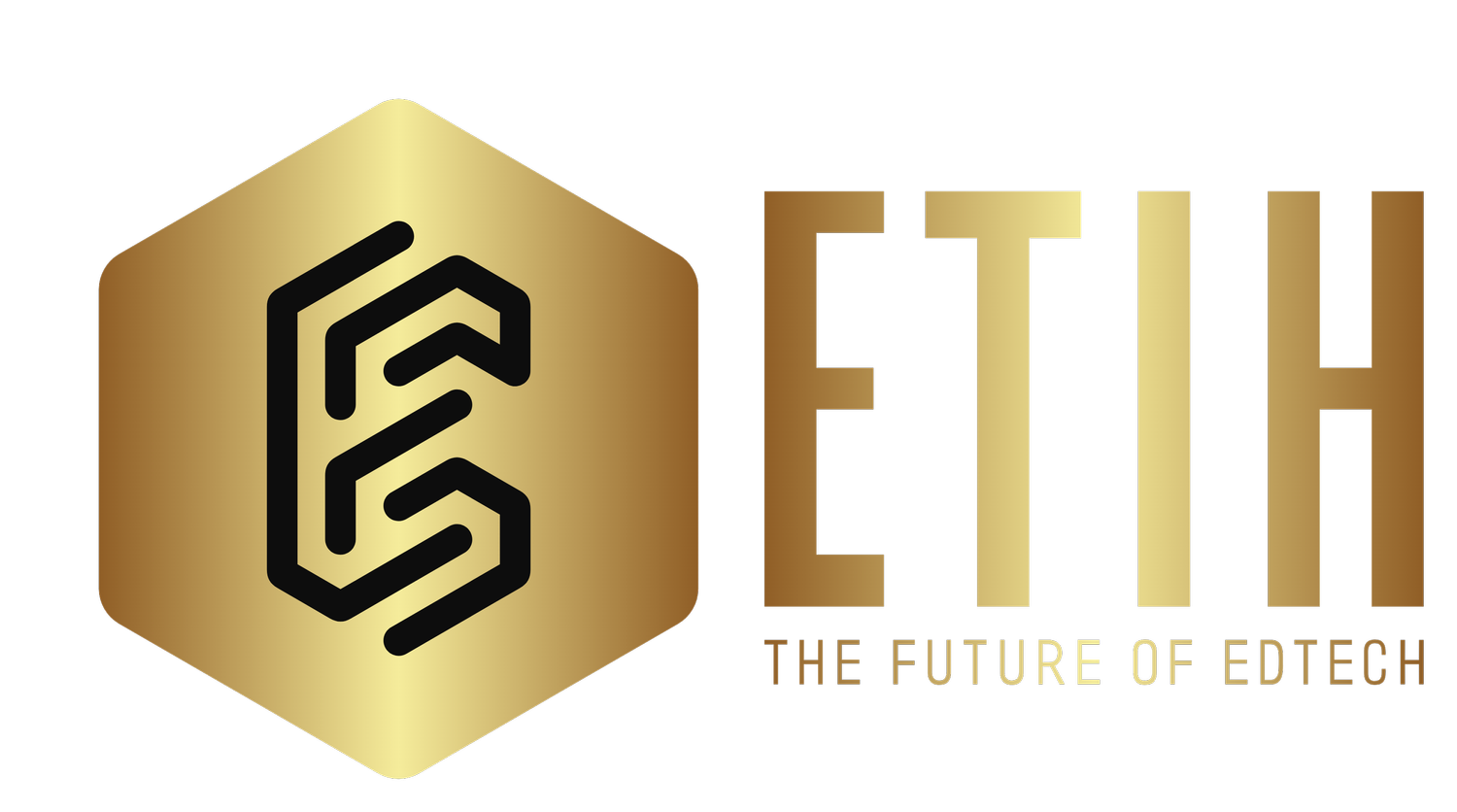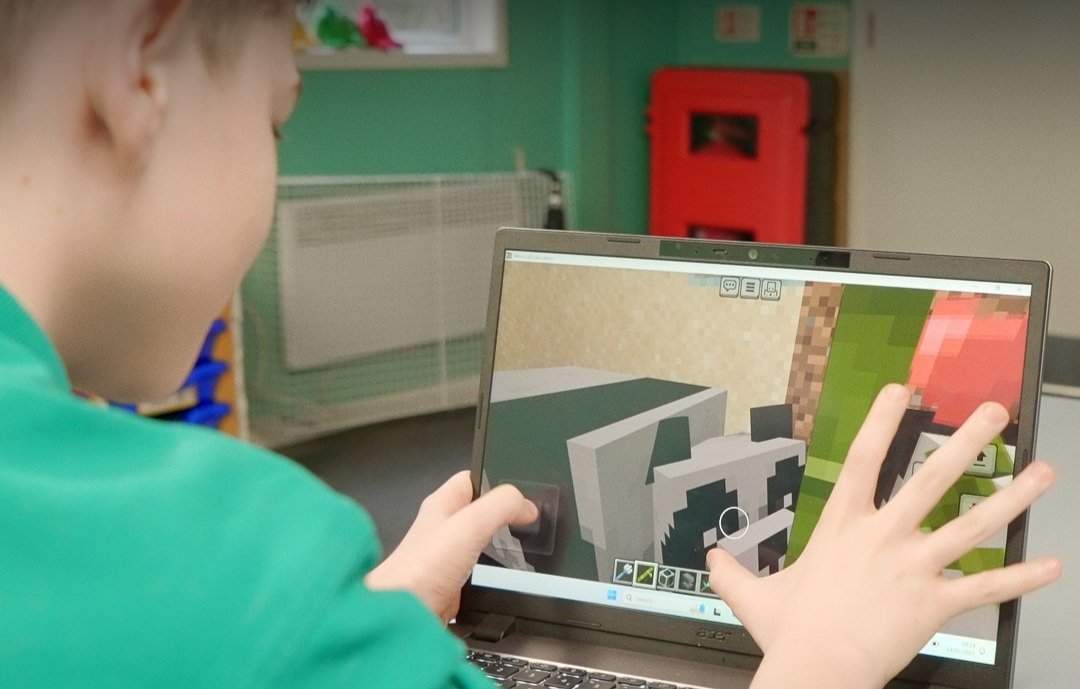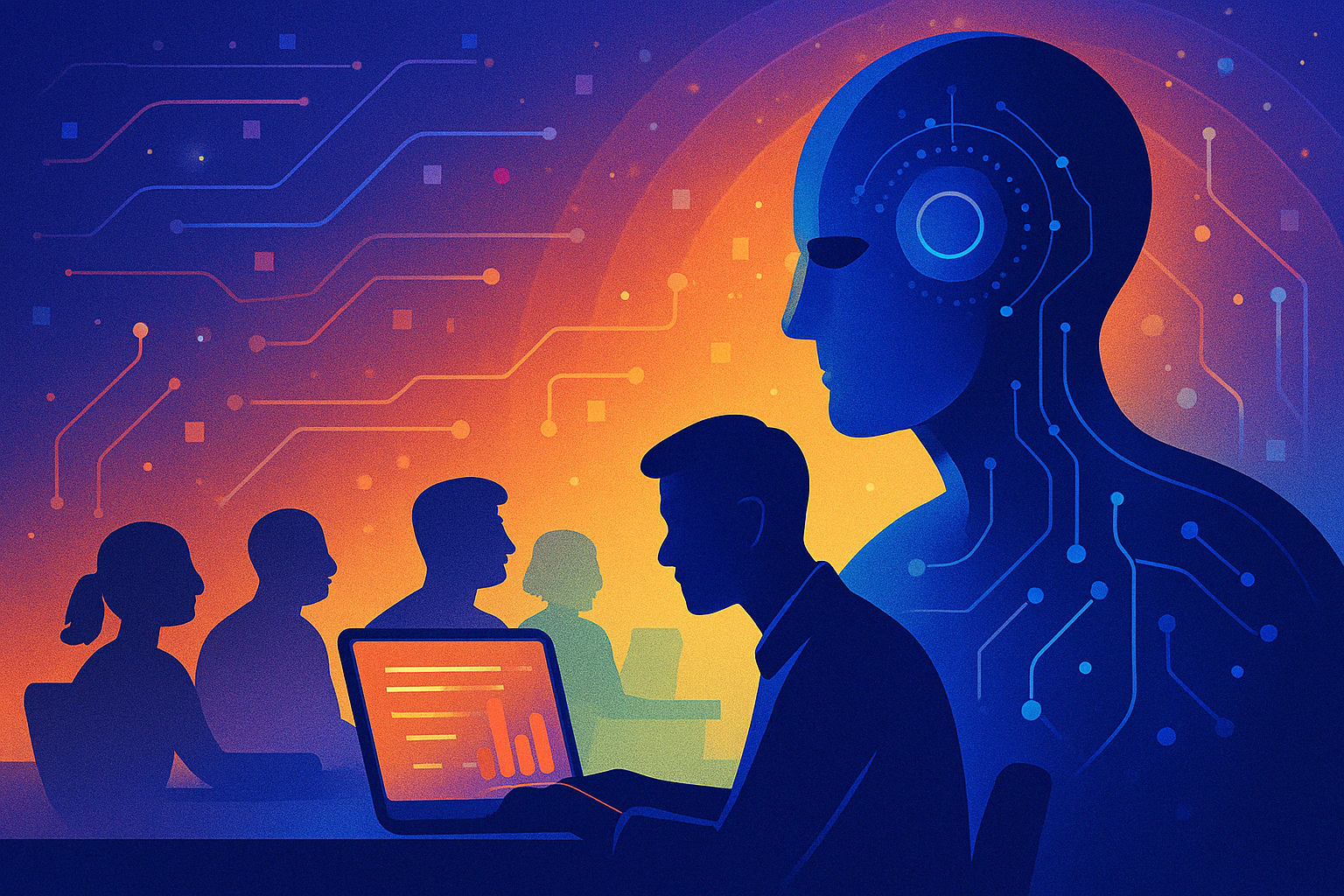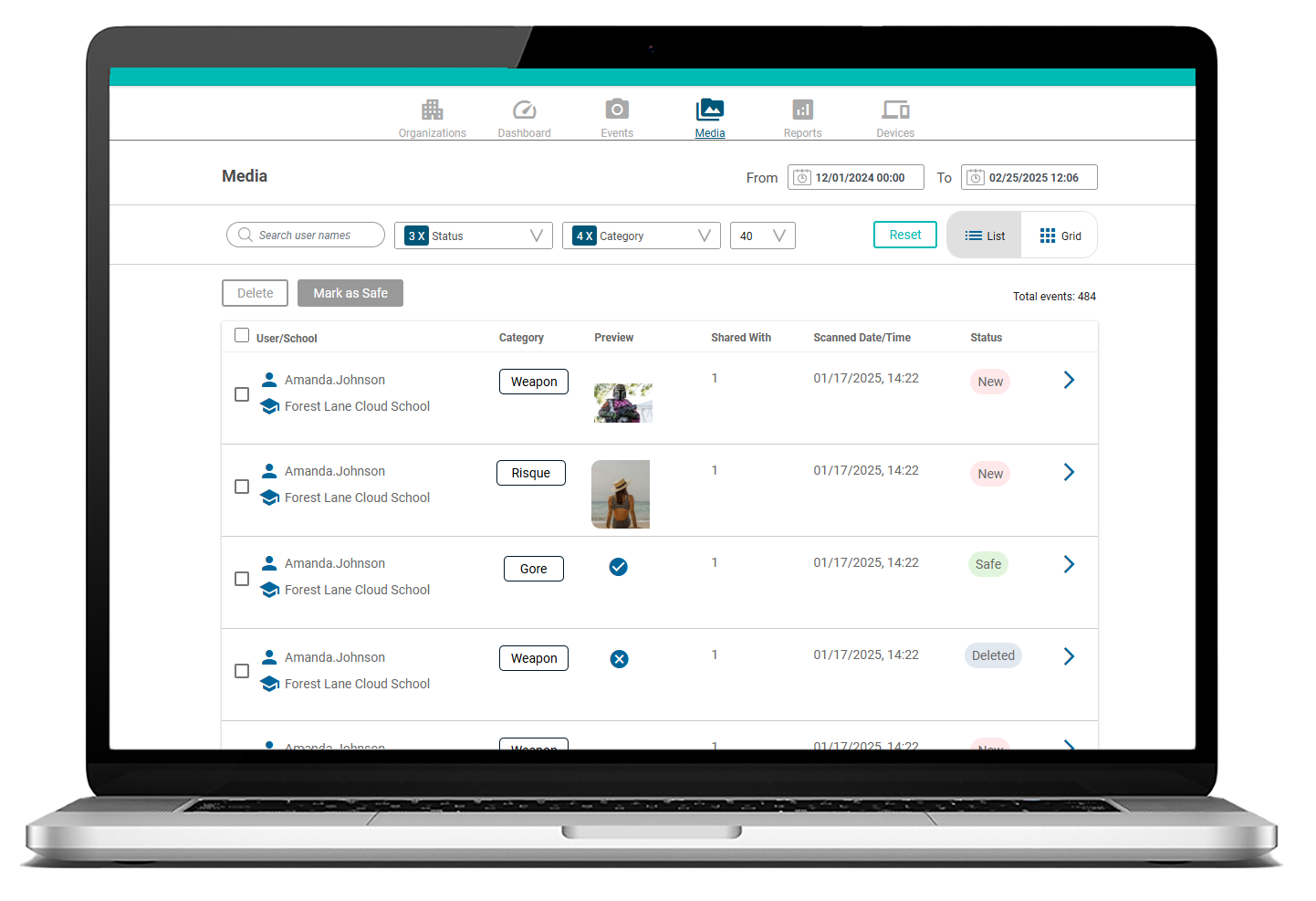Top 20 ETIH stories of the year: Counting down 2024's biggest moments in edtech - part two
We’ve covered the groundbreaking tools, strategic investments, and innovative partnerships that shaped the year in education in part one. But now, it’s time for the heavy hitters. In part two of our Top 20 edtech Stories of 2024, we count down from 10 to 1, where the stakes get higher, and the innovations get bolder.
Get ready for AI-driven classrooms, record-breaking funding rounds, and the universities leading the charge in AI education. These stories don’t just reflect where edtech is today – they point to where it’s going tomorrow. If Part One showed us the foundation, Part Two reveals the big leaps forward that are pushing the boundaries of what’s possible in education.
10. Nectir secures $6.3M seed funding to advance AI personalized learning (December)
Cracking the top 10, Nectir secured $6.3 million in seed funding to take personalized learning to the next level. With teacher shortages and student performance gaps making headlines, Nectir’s AI-powered platform is stepping in to offer a helping hand. They provide students with AI learning assistants that adapt to their needs.
This investment signals growing confidence in AI-driven solutions as a way to address systemic challenges in education. Nectir aims to make tailored learning accessible to more classrooms, without piling more pressure on teachers.
In a landscape where efficiency and personalization are becoming non-negotiable, Nectir’s approach highlights a trend we’re likely to see more of in 2025: AI stepping up to support human teaching, not replace it.
9. BG Titan Group and Veea partner to enhance internet access in North Africa (July)
Stepping into the spotlight at number 9, BG Titan Group and Veea are tackling a fundamental challenge: bringing reliable internet access to North Africa’s underserved regions.
Their vision? Transform rural schools into thriving digital hubs using Veea’s virtual Broadband Access platform. For students and teachers who’ve struggled with patchy connections, this partnership promises to open doors to online education and digital tools.
But this initiative isn’t just about improving connectivity. It’s about laying the groundwork for sustainable growth in education, healthcare, and beyond.
This partnership shows how connectivity can bridge educational gaps and create new opportunities for learning.
8. Udemy introduces AI Assistant and Skills Mapping to support workforce development (October)
In at number 8, Udemy rolled out an AI Assistant and Skills Mapping tools to personalize workforce development. The AI Assistant offers personalized course recommendations, while the Skills Mapping feature helps companies identify and address skill gaps within their teams.
In a rapidly changing job market, these tools aim to streamline upskilling, making it easier for employees to stay relevant and for businesses to remain competitive. Udemy’s approach reflects a broader trend of AI shaping professional learning, offering a more efficient and targeted way to develop essential skills.
7. Rising demand for AI courses in UK Universities shows 453% Growth (November)
At number 7, the skyrocketing demand for AI courses in UK universities (a whopping 453% increase) proves that students are getting the memo: AI skills are hot. The surge highlights the growing importance of AI skills in an evolving job market and the increasing recognition that AI literacy is essential for future careers.
As industries integrate AI at a rapid pace, students are pivoting toward AI education to stay competitive. This trend underscores a broader shift in higher education, where demand for AI expertise is reshaping course offerings and career pathways.
6. Five Sigma acquires stake in ClassDojo to enhance classroom solutions (March)
Cracking the list at number 6, Five Sigma decided to throw its weight behind ClassDojo, the classroom communication app that’s practically a household name for teachers, parents, and students.
This isn’t just a casual investment – it’s a strategic move to keep ClassDojo at the front of the pack when it comes to classroom engagement tools.
ClassDojo has already made its mark by making parent-teacher communication as easy as sending a text.
Now, with Five Sigma in the mix, expect to see more innovations that could make managing classrooms smoother and keeping parents in the loop even simpler. In a world where effective communication can make or break a school year, this partnership is all about ensuring that those connections stay strong.
5. Buddy.ai secures $11M to expand AI tutoring for kids (November)
Kicking off the top 5, Buddy.ai secured $11 million in funding to expand its AI-powered tutoring service. Designed for children, Buddy.ai uses voice-based AI tutors to support learning in reading, math, and language skills. The platform offers an affordable and scalable alternative to traditional one-on-one tutoring, making personalized learning more accessible to families.
By combining speech recognition and AI-driven feedback, Buddy.ai aims to keep young learners engaged and on track with their education. This investment reflects a broader trend in EdTech, where AI is being used to address educational gaps and offer support beyond the classroom.
Richard Branson and Made By Dyslexia launch free University of Dyslexic Thinking (September)
At number 4, Richard Branson and Made By Dyslexia teamed up to launch the University of Dyslexic Thinking – a free online platform designed to celebrate and harness the strengths of dyslexic minds. Instead of focusing on challenges, this initiative highlights the unique skills that dyslexic thinkers bring to the table, like creativity, problem-solving, and big-picture thinking.
Through a series of courses and resources, the platform aims to shift perceptions and empower dyslexic individuals to thrive in education and the workplace. With Richard Branson leading the charge, the message is clear: dyslexia isn’t a disadvantage – it’s a different way of thinking that offers real value.
This launch reflects a growing movement toward neurodiversity in education and business, reminding us that diversity is a strength, not a weakness.
3. AI-driven teacherless classrooms launched in London (August)
Taking the number 3 spot, London’s David Game College made waves by unveiling AI-driven teacherless classrooms. In these experimental learning spaces, AI steps into the role traditionally filled by human teachers, guiding students through lessons, providing feedback, and managing learning progress.
This bold move has sparked a mix of curiosity and concern. Proponents see it as a way to tackle teacher shortages and offer a consistent, personalized learning experience. Critics, however, question whether AI can truly replicate the human connection and adaptability that teachers bring to the classroom.
While it’s too soon to tell if AI-led classrooms are the future of education or just a passing trend, one thing is certain: this launch pushes the boundaries of how technology and teaching intersect. Whether it inspires more innovation or raises red flags, the conversation around AI in education is far from over.
2. Microsoft discontinues Flip’s standalone app, integrates into Teams (June)
In at number 2, Microsoft dropped a bombshell that had educators reeling: the beloved Flip (formerly Flipgrid) standalone app is no more, with all its functions folded into Microsoft Teams for Education. For many teachers, especially those in Google Classroom districts, this move felt like a punch to the gut. Flip was the go-to tool for amplifying student voices, fostering creativity, and sparking classroom engagement. Now, its fate is tied to Teams, leaving educators worried about accessibility and ease of use.
Microsoft’s rationale? Simplifying workflows and streamlining tools for educators. But the backlash was swift, with teachers taking to social media to vent their frustration. The message was clear: sometimes consolidation creates more headaches than it solves.
This story highlights a growing tension in EdTech – balancing innovation with reliability. Flip’s integration into Teams may work for some, but it risks leaving others behind. Will Microsoft’s gamble pay off, or will this be remembered as a textbook example of a good tool lost to corporate strategy? Only time will tell.
1. Top 50 universities for AI education in 2024 revealed (March)
And finally, taking the crown at number 1, DailyAI’s global ranking of the Top 50 Universities for AI Education showcases the institutions leading the charge in AI innovation.
From powerhouse institutions like MIT, Stanford, and Oxford to emerging leaders, this list highlights the universities at the forefront of AI research, innovation, and teaching.
This story underscores just how pivotal AI has been in 2024 – and it’s only going to get bigger. With universities doubling down on AI programs, one thing is certain: the future belongs to those who can harness the power of AI.
The surge in AI courses and research initiatives shows a clear trend – the demand for AI skills is skyrocketing, and education is racing to meet it.
This story sums up 2024 in a nutshell: AI is reshaping how we learn, work, and innovate. If the future belongs to those who understand AI, then these universities are where the future is being built.
That’s a wrap on 2024!
From AI-powered tutors to teacherless classrooms, this year made one thing crystal clear: AI, innovation, and digital transformation aren’t just trends – they’re the new backbone of education.
As we move into 2025, expect these forces to dig in even deeper, reshaping how we teach, learn, and manage education. AI is no longer a shiny new gadget sitting on the sidelines. It’s stepping onto the field, ready to play a bigger role in everything from personalized learning pathways to streamlining administrative tasks that eat up teachers’ precious time.
For educators, that could mean more time focusing on students and less time drowning in paperwork. For students, it could mean learning experiences tailored to their needs, strengths, and even their quirks.
But it’s not all smooth sailing. With AI taking a more prominent role, the industry will need to grapple with big questions about equity, ethics, and human connection. How do we ensure access for all students? Where do we draw the line between human teaching and AI assistance? These conversations aren’t going anywhere – and 2025 will demand some answers.

























